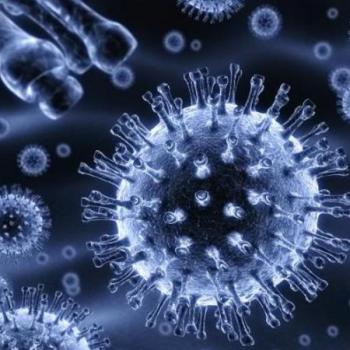
Classification
Antineoplastons are chemical compounds made of amino acids and other organic compounds. They are normally found in the blood and urine, but they can be synthetically produced in laboratories.1, 2
Introduction and Background
Antineoplaston therapy was developed by Dr. Stanislaw Rajmund Burzynski in 1976 as a potential cancer treatment. He proposed that antineoplastons are needed by the body to inhibit cancer cell development and to convert cancer cells back into normal cells after observing lower levels of antineoplastons in people with cancer. Antineoplaston therapy is administered orally or by injection.2, 3
As of July 2013, this treatment is not being offered in the United States. Previously, it was available only at Dr. Burzynski’s clinic in Houston, Texas.4
Scientific Research
Antineoplastons have been studied for their potential anti-cancer effects. However, few trials and case studies have been conducted outside of Dr. Burzynski’s clinic. In fact, most of the case studies and Phase I and II trials that have been published are by Dr. Burzynksi and his associates, and their studies report results that are not replicable by other researchers, due to confounding interpretations.5
A detailed summary of studies done by Dr. Burzynski can be found on the NCI’s website.
Studies independent of Dr. Burzynski and his clinic
A study on the effects of antineoplaston A10’s on the human hepatocellular carcinoma cell lines HepG2 and HLE was conducted on cells grown in the lab (in vitro), and in mice (in vivo). Greater anti-cancer effects were observed at higher doses and/or longer incubation times. Anti-proliferative effects were also observed in the xenografts of mice treated with antineoplaston A10.6
The anti-proliferation effects of antineoplaston A10 were also observed in another in vitro study, with a breast cancer cell line called SKBR-3. Noticeable inhibition of SKBR-3 proliferation was observed. The cells stopped dividing and were ‘locked’ and could not reproduce (also called cell cycle arrest).7
Similar G1 cell cycle arrests were also observed with KM12SM human colon carcinoma cells implanted in a nude rat treated with antineoplaston AS2-1. Further antimetastatic effects and apoptosis were observedin the post-operative lung metastases in the rat.8
In a small Japanese phase II clinical trial, 10 patients with recurring hepatocellular carcinoma (HCC) were treated with antineoplaston AS2-1. The study found that antineoplaston AS2-1 could not prevent HCC from recurring but, at least in some patients, the treatment was shown to lengthen the time between recurrences.9
While some studies have demonstrated anti-cancer effects in vitro and in vivo, in other studies antineoplastons have had little or no effect on cancer cells. In a small phase II trial of antineoplastons A10 and AS2-1 in patients with recurring anaplastic astrocystoma and glioblastoma multiforme, no tumor regression was observed. Instead, reversible nervous system toxicity occurred in 5 of 6 patients.10 A more recent study found that liver cancer patients given chemotherapy directly to their liver along with antineoplastons had better cancer-specific survival, but their overall survival was not significantly higher than patients given chemotherapy without antineoplastons.11
Side effects from antineoplaston treatment range from mild to severe.10, 12
To date, only Phase I and Phase II clinical trials have been conducted with antineoplaston treatment.13
For Further Reading
The National Cancer Institute has published a Physician Data Query (PDQ) summary on antineoplastons, written specifically for cancer patients.
US Food and Drug Administration Approval
There is not enough evidence to support the effectiveness of antineoplastons in treating cancer, and they have not been approved by the FDA for cancer treatment.14
Please be sure to see our notice on complementary therapies. To better understand and evaluate the research described above, read our Introduction to Scientific Research.
- 1 Antineoplastons: General Information. National Cancer Institute (PDQ®). Health professional version. [http://www.cancer.gov/cancertopics/pdq/cam/antineoplastons/healthprofessional/page2]
- 2ab Burzynski SR. Antineoplastons: history of the research (I). Drugs Exp Clin Res. 1986;12 Suppl 1:1-9. [PUBMED]
- 3 PubMed Health: Antineoplastons (Patient Version) [http://www.ncbi.nlm.nih.gov/pubmedhealth/PMH0032742/]
- 4 Burzynski Clinic Website and personal communication with clinic staff. [http://www.burzynskiclinic.com/]
- 5 Antineoplastons PDQ®. National Cancer Institute. Accessed 07-11-2013 [http://www.cancer.gov/cancertopics/pdq/cam/antineoplastons/healthprofessional/page5#Section_49]
- 6 Qu XJ, Cui SX, Tian Z, Li X, Chen MH, Xu WF, Inagaki Y, Deng YB, Makuuchi M, Nakata M, Tang W. Induction of apoptosis in human hepatocellular carcinoma cells by synthetic antineoplaston A10. Anticancer Res. 2007 Jul-Aug;27(4B):2427-31. [PUBMED]
- 7 Fujii T, Nakamura AM, Yokoyama G, Yamaguchi M, Tayama K, Miwa K, Toh U, Kawamura D, Shirouzu K, Yamana H, Kuwano M, Tsuda H. Antineoplaston induces G(1) arrest by PKCalpha and MAPK pathway in SKBR-3 breast cancer cells. Oncol Rep. 2005 Aug;14(2):489-94. [PUBMED]
- 8 Matono K, Ogata Y, Tsuda H, Araki Y, Shirouzu K. Effects of antineoplaston AS2-1 against post-operative lung metastasis in orthotopically implanted colon cancer in nude rat. Oncol Rep. 2005 Mar;13(3):389-95. [PUBMED]
- 9 Tsuda H, Sata M, Kumabe T, Uchida M, Hara H. The preventive effect of antineoplaston AS2-1 on HCC recurrence. Oncol Rep. 2003 Mar-Apr;10(2):391-7. [PUBMED]
- 10ab Buckner JC, Malkin MG, Reed E, Cascino TL, Reid JM, Ames MM, Tong WP, Lim S, Figg WD. Phase II study of antineoplastons A10 (NSC 648539) and AS2-1 (NSC 620261) in patients with recurrent glioma. Mayo Clin Proc. 1999 Feb;74(2):137-45. [PUBMED]
- 11 Ogata Y, Matono K, Tsuda H, Ushijima M, Uchida S, Akagi Y, Shirouzu K. Randomized phase II study of 5-fluorouracil hepatic arterial infusion with or without antineoplastons as an adjuvant therapy after hepatectomy for liver metastases from colorectal cancer. PLoS One. 2015 Mar 19;10(3):e0120064. [PUBMED]
- 12 Antineoplastons - Side effects: NCI PDQ® [http://www.cancer.gov/cancertopics/pdq/cam/antineoplastons/healthprofessional/page6]
- 13 PubMed Health: Antineoplastons PDQ® Accessed 07-11-13 [http://www.ncbi.nlm.nih.gov/pubmedhealth/PMH0032742/]
- 14 US Food and Drug Adminstration website. Accessed 6/20/2016. [http://www.fda.gov/]
